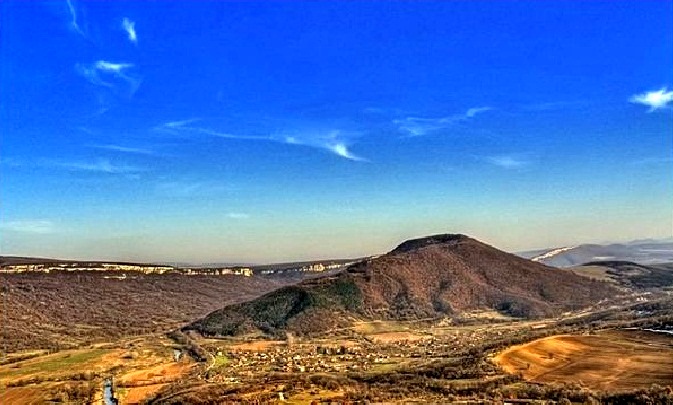UD: May 2019
The strategy of Ethnic Engineering – the mass deportation of certain ethnic groups as part of a wider political or military plan – was common in the Ancient World, reaching its peak in the Roman Imperial period.
The first major example in southeastern Europe is recorded at the end of the 4th c. BC, when it was implemented by the Macedonian leader Kassander in an attempt to halt the southwards advance of the Celtic tribes in the Balkans. As part of this strategy, 20,000 of the Illyrian Autariatae tribe, who had fled into Macedonia in the face of the Celtic advance, were resettled in the Orbelos area (on the modern Greek/Bulgarian border) as military settlers in order to establish a buffer zone protecting Macedonia’s northern border from Celtic expansion (Diodorus Siculus Bibliotheca historica XX. 19.1). A similar strategy was the establishment of the city of Seuthopolis/Sevtopolis on the southern slopes of the Haemus (Balkan) mountains (in today’s south-central Bulgaria), also at the end of the 4th c. BC, where the Thracian Odryssae tribe were installed by the Macedonians in an apparent attempt to defend the strategic Shipka pass.
Bronze head of the Thraco-Macedonian king, Sevt/Seuthes III, discovered at the Golyama Kosmatka Tumulus near Seuthopolis, Bulgaria
A variation of the same policy was implemented by the Macedonian King Philip V in 179 BC. In order to neutralize the Dardanii tribes, traditional Macedonian enemies, Philip struck a deal with the Celtic Scordisci and the Bastarnae, whereby the latter would be resettled in Dardania, thus eliminating the Dardanii threat, and ensuring Bastarnae help for Macedonia’s planned war with Rome (Livy 40:57, 41:19).
Philip V Didrachm
The policy of Ethnic Engineering on the Balkans during this period produced mixed results, and rather than solving the problem, it often simply postponed or relocated it. The ethnic buffer zone created to protect Macedonia’s northern border by Kassander later proved counterproductive when the Illyrians actually joined the Celtic tribes in their attack on Macedonia.
Remains of the Macedonian city at Pistiros, near Vetren (Pazardjik reg.), Bulgaria. The city was completely destroyed during the “barbarian” invasion of 280/279 BC
https://balkancelts.wordpress.com/2015/02/14/the-celtic-conquest-of-thrace-280279-bc/
The Sevtopolis experiment failed miserably when, in the face of the Celtic advance, the Thracians simply abandoned the city and fled. Philip’s partially successful attempt to resettle the Bastarnae in Dardania produced no long term benefits for Macedonia, and following his death the Bastarnae refused to fight for Philip’s son, Perseus, in his war with Rome.
Probably the most tragic experiment in ‘Ethnic Engineering’ in the Hellenistic sphere was undertaken by Attalus I Soter, King of Pergamon, who lured the Celtic Aegosages tribe from Thrace into Asia-Minor in 218 BC with promises of rich land to settle (Poly. Hist. V 78.1). Having crossed into Asia, the Aegosages refused to become involved in the king’s conflict with Seleucus III, and Attalus rapidly abandoned them. Having become an inconvenience, the tribe were subsequently hunted down by the region’s leaders, and finally massacred at Abydas by the Bithynian King Prusias (Poly. Hist. 111 6-7):
‘Prusias, therefore, led an army against them, and after destroying all the men in a pitched battle, put to death all the women and children in their camp, and allowed his soldiers who had taken part in the battle to plunder the baggage’.
Prusias I Cholus, King of Bithynia (AR Tetradrachm)
“These are degenerates, a mongrel race …”.
The Roman commander Gnaeus Manlius Vulso to his troops during the Galatian campaign
(Livy 38:17)
Human remains from the Celtic Settlement at Gordium (Galatia)
Another variant of this policy was implemented by Gnaeus Manlius Vulso in Galatia in 189 BC, when the Roman general unleashed a campaign of systematic genocide on the local Celtic tribes. This pogrom resulted in the deaths of tens of thousands of men, women and children, culminating in the massacres at mount Olympus and Ancyra.
Most examples of ‘Ethnic Engineering’, in its various forms, date from the Roman Imperial period. In 26 AD a plan was formulated by Rome for the mass deportation of the troublesome Celtic Artacoi tribe in the Haemus (Balkan) mountains. However, fierce resistance to Rome’s deportation policy meant that, after a bitter struggle in 26 AD, the empire abandoned its attempt to relocate the tribe (Tacitus Ann. iv).
In the later Roman period the policy had the long term effect of further complicating the ethnic mix on the Balkans. Under the Emperor Probus (276-82) 100,000 of the (Celto-Scythian) Bastarnae were settled in Thrace (Historia Augusta Probus 18), and shortly afterwards Emperor Diocletian (284-305) carried out another ‘massive’ transfer of the Bastarnae population to the south of the Danube (Eutropius IX.25). Thus, the Bastarnae presence in Thrace, already well established since the 2nd c. BC, was reinforced by the ethnic engineering policies of both Probus and Diocletian. Despite the fact that historians in the region have completely ignored the Bastarnae, such statistics are estimated to represent the majority, if not all, of the Peucini Bastarnae, and leaves no doubt that by the Late Roman period a substantial proportion of the population of the central and eastern Balkans were of Bastarnae origin.
Bust of Diocletian
(Arkeoloji Müzesi, İstanbul)
On the Bastarnae see: https://balkancelts.wordpress.com/2016/05/01/celto-scythians-and-celticization-in-ukraine-and-the-north-pontic-region/
Once set in motion the ultimate consequences of ethnic engineering were highly unpredictable, and often catastrophic. The disastrous potential of such a policy is best illustrated by the case of the Roman emperor Valens, who facilitated the movement of the Goths and associated tribes into Thrace at the end of the 4th c. Initially Roman allies, this relationship soon changed radically, largely due to the corruption of the imperial officials (Jord. xxvi:134), and there followed a sequence of events which would culminate in the ‘barbarians’ turning on the empire (Ammianus xxxi:13), the destruction of the Roman army at Adrianople in 378, and the emperor himself being burned alive...
Mac Congail
.













